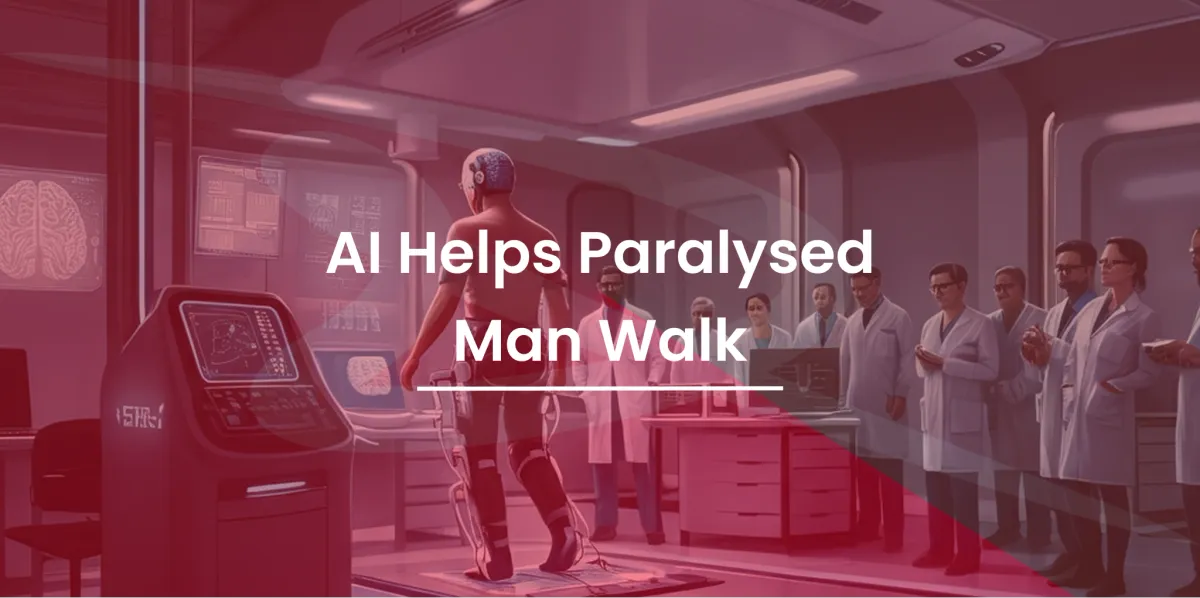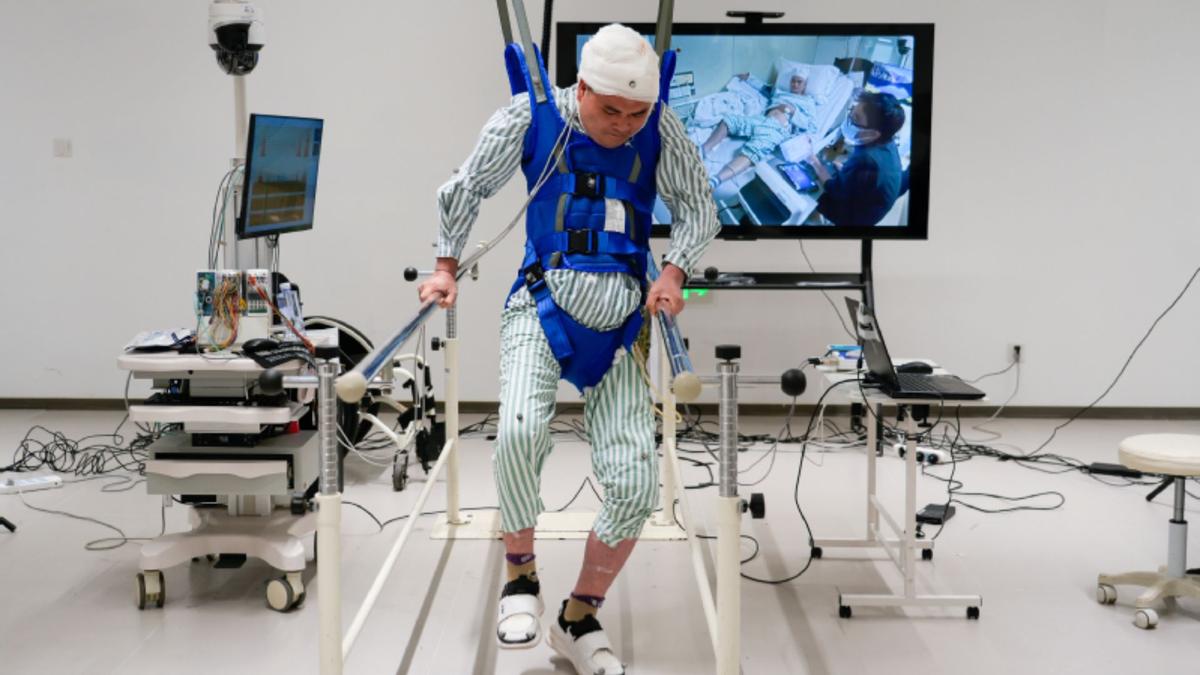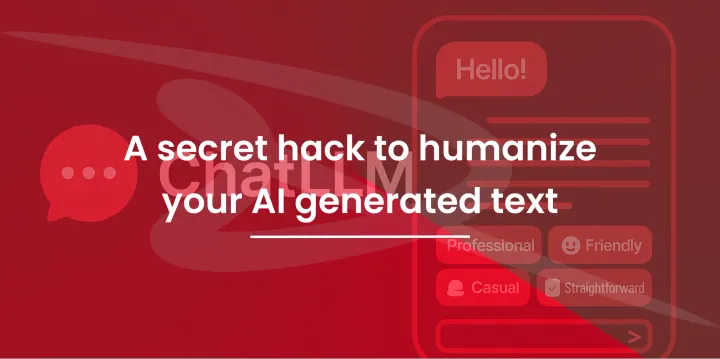AI Helps Paralyzed Man Walk Again: A Groundbreaking Milestone in Neurotechnology
This blog explores the challenges spinal cord injury patients face, dives into the mechanics behind this life-changing technology, and highlights what this development means for the future of medicine and neurotechnology.

Imagine being told you’ll never walk again, only to defy the odds through the power of innovation. Thanks to a major breakthrough by scientists at Fudan University in Shanghai, individuals paralyzed by spinal cord injuries can now regain mobility. Using AI-powered brain-spine interface (BSI) technology, this pioneering development restores neural communication and opens the door to a new chapter in treating paralysis.
This blog explores the challenges spinal cord injury patients face, dives into the mechanics behind this life-changing technology, and highlights what this development means for the future of medicine and neurotechnology.
Understanding Spinal Cord Injuries

A spinal cord injury disrupts the connection between the brain and muscles, often resulting in partial or complete paralysis. There are an estimated 20 million people worldwide living with spinal cord injuries. The effects are not just physical; they impact every facet of life—from independence to mental well-being.
Existing Treatments and Their Shortcomings
Until now, treatment options were limited. Rehabilitation programs and assistive technologies like exoskeletons offered incremental improvements but required months of effort, not to mention their steep cost. While breakthroughs like Elon Musk’s Neuralink chip are gaining attention, they primarily rely on controlling movement through external devices, leaving underlying neural pathways largely untapped.
The Breakthrough: Brain-Spine Interface Technology
Developed at Fudan University’s Institute of Science and Technology for Brain-Inspired Intelligence, the brain-spine interface (BSI) is truly revolutionary. For the first time, researchers have created a minimally invasive system that combines AI algorithms with electrode implants to reestablish neural communication, bypassing damaged sections of the spinal cord altogether.
How the Brain-Spine Interface Works
- Electrode Implants
Two tiny electrodes, each just 1mm in diameter, are placed in the brain's motor cortex and on the spinal cord below the site of injury. - AI-Powered Signal Translation
The implanted electrodes intercept brain signals and transmit them to the spinal cord via AI-driven neural decoding. These signals mimic natural neural pathways, directing muscles to move. - Reestablishing Communication
This “neural bypass” removes the need for external reliance on computers. Instead, it stimulates dormant nerves, enabling the body to re-learn and adapt through neural remodeling.
The Technology in Action
Professor Jia Fumin, the lead researcher, described this as the “world’s first triple-integrated BSI system.” Restoring communication between the brain and paralyzed limbs has already yielded extraordinary results.
Clinical Trials and Results

During proof-of-concept clinical trials, four patients underwent the BSI procedure. The results were nothing short of remarkable.
- Within 24 Hours
Patients moved their legs for the first time in years. - Within Two Weeks
A 34-year-old volunteer named Lin, who had been paralyzed from a fall, was able to walk over 16 feet using a standing frame. - Improved Sensations
Lin also experienced restored nerve sensations, including the return of bladder control and thermal sensitivity in his feet.
Unlike previous methods, which often required six months to see results, this innovation showcases its efficacy in as few as 14 days.
Why This Technology Stands Out
Faster Results
By reestablishing neural pathways directly through AI, recovery times have been drastically reduced compared to Western approaches like Neuralink or Swiss research teams.
Less Invasive
With implants only 1mm wide, this procedure is minimally invasive. This reduces surgical risks, pain, and recovery time, making it more accessible to a broader range of patients.
Self-Reliance
This isn’t just about movement. Through consistent use of the BSI and rehabilitation, the affected nerves can rewire and reshape entirely. Patients may no longer require long-term dependence on external assistive devices.
Implications for the Future of Neurotechnology

The success of the brain-spine interface signals a turning point in paralysis treatment.
A Massive Impact in China and Beyond
With 3.74 million spinal cord injury patients in China alone and about 90,000 new cases annually, scaling this system could transform countless lives. Beyond physical freedom, the regained independence could boost mental health and quality of life, impacting families and broader support systems.
The Role of AI in Personalizing Recovery
Ongoing projects include refining the AI algorithms to better interpret a wider range of brain signals and expanding the implants’ adaptability for other types of paralysis, including stroke or degenerative diseases like ALS.
A New Era in Spinal Cord Repair
The groundbreaking development of the brain-spine interface not only gives patients like Lin their mobility back but also offers hope to millions worldwide who were told paralysis was permanent.
What sets this apart isn’t just technology or speed. It’s the power of human resilience and the possibilities that arise when science, technology, and medicine collaborate.
Take the Next Step to Stay Updated
This is just the start. To stay informed about developments in neurotechnology or to share insights on how science shapes hope, follow our blog or leave your thoughts in the comments below.




Comments ()